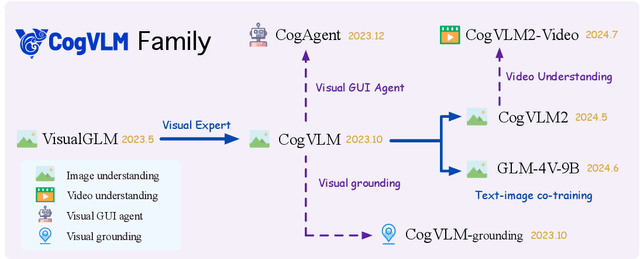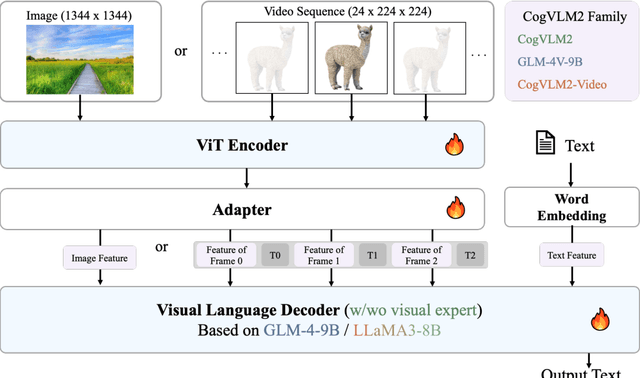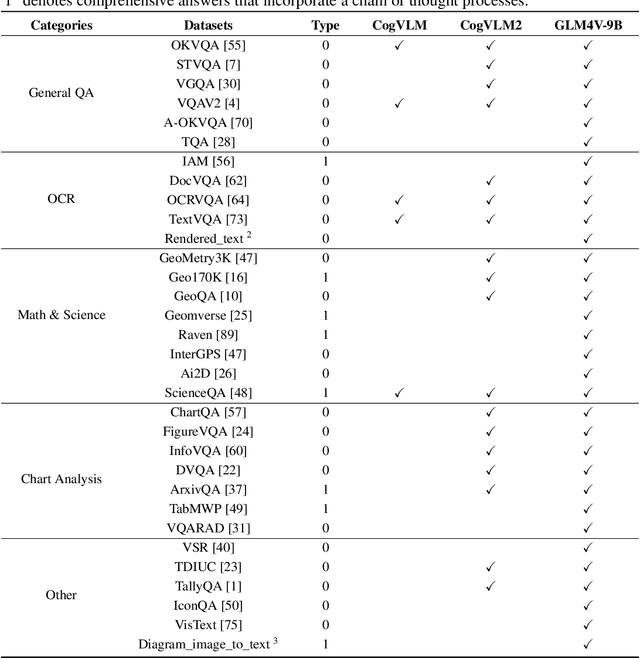Bin Xu
SDHN: Skewness-Driven Hypergraph Networks for Enhanced Localized Multi-Robot Coordination
Apr 09, 2025Abstract:Multi-Agent Reinforcement Learning is widely used for multi-robot coordination, where simple graphs typically model pairwise interactions. However, such representations fail to capture higher-order collaborations, limiting effectiveness in complex tasks. While hypergraph-based approaches enhance cooperation, existing methods often generate arbitrary hypergraph structures and lack adaptability to environmental uncertainties. To address these challenges, we propose the Skewness-Driven Hypergraph Network (SDHN), which employs stochastic Bernoulli hyperedges to explicitly model higher-order multi-robot interactions. By introducing a skewness loss, SDHN promotes an efficient structure with Small-Hyperedge Dominant Hypergraph, allowing robots to prioritize localized synchronization while still adhering to the overall information, similar to human coordination. Extensive experiments on Moving Agents in Formation and Robotic Warehouse tasks validate SDHN's effectiveness, demonstrating superior performance over state-of-the-art baselines.
DSU-Net:An Improved U-Net Model Based on DINOv2 and SAM2 with Multi-scale Cross-model Feature Enhancement
Mar 31, 2025Abstract:Despite the significant advancements in general image segmentation achieved by large-scale pre-trained foundation models (such as Meta's Segment Any-thing Model (SAM) series and DINOv2), their performance in specialized fields remains limited by two critical issues: the excessive training costs due to large model parameters, and the insufficient ability to represent specific domain characteristics. This paper proposes a multi-scale feature collabora-tion framework guided by DINOv2 for SAM2, with core innovations in three aspects: (1) Establishing a feature collaboration mechanism between DINOv2 and SAM2 backbones, where high-dimensional semantic features extracted by the self-supervised model guide multi-scale feature fusion; (2) Designing lightweight adapter modules and cross-modal, cross-layer feature fusion units to inject cross-domain knowledge while freezing the base model parameters; (3) Constructing a U-shaped network structure based on U-net, which utilizes attention mechanisms to achieve adaptive aggregation decoding of multi-granularity features. This framework surpasses existing state-of-the-art meth-ods in downstream tasks such as camouflage target detection and salient ob-ject detection, without requiring costly training processes. It provides a tech-nical pathway for efficient deployment of visual image segmentation, demon-strating significant application value in a wide range of downstream tasks and specialized fields within image segmentation.Project page: https://github.com/CheneyXuYiMin/SAM2DINO-Seg
Rule-Based Conflict-Free Decision Framework in Swarm Confrontation
Mar 10, 2025Abstract:Traditional rule-based decision-making methods with interpretable advantage, such as finite state machine, suffer from the jitter or deadlock(JoD) problems in extremely dynamic scenarios. To realize agent swarm confrontation, decision conflicts causing many JoD problems are a key issue to be solved. Here, we propose a novel decision-making framework that integrates probabilistic finite state machine, deep convolutional networks, and reinforcement learning to implement interpretable intelligence into agents. Our framework overcomes state machine instability and JoD problems, ensuring reliable and adaptable decisions in swarm confrontation. The proposed approach demonstrates effective performance via enhanced human-like cooperation and competitive strategies in the rigorous evaluation of real experiments, outperforming other methods.
Extrapolation Merging: Keep Improving With Extrapolation and Merging
Mar 05, 2025Abstract:Large Language Models (LLMs) require instruction fine-tuning to perform different downstream tasks. However, the instruction fine-tuning phase still demands significant computational resources and labeled data, lacking a paradigm that can improve model performance without additional computational power and data. Model merging aims to enhance performance by combining the parameters of different models, but the lack of a clear optimization direction during the merging process does not always guarantee improved performance. In this paper, we attempt to provide a clear optimization direction for model merging. We first validate the effectiveness of the model extrapolation method during the instruction fine-tuning phase. Then, we propose Extrapolation Merging, a paradigm that can continue improving model performance without requiring extra computational resources or data. Using the extrapolation method, we provide a clear direction for model merging, achieving local optimization search, and consequently enhancing the merged model's performance. We conduct experiments on seven different tasks, and the results show that our method can consistently improve the model's performance after fine-tuning.
Agentic Reward Modeling: Integrating Human Preferences with Verifiable Correctness Signals for Reliable Reward Systems
Feb 26, 2025Abstract:Reward models (RMs) are crucial for the training and inference-time scaling up of large language models (LLMs). However, existing reward models primarily focus on human preferences, neglecting verifiable correctness signals which have shown strong potential in training LLMs. In this paper, we propose agentic reward modeling, a reward system that combines reward models with verifiable correctness signals from different aspects to provide reliable rewards. We empirically implement a reward agent, named RewardAgent, that combines human preference rewards with two verifiable signals: factuality and instruction following, to provide more reliable rewards. We conduct comprehensive experiments on existing reward model benchmarks and inference time best-of-n searches on real-world downstream tasks. RewardAgent significantly outperforms vanilla reward models, demonstrating its effectiveness. We further construct training preference pairs using RewardAgent and train an LLM with the DPO objective, achieving superior performance on various NLP benchmarks compared to conventional reward models. Our codes are publicly released to facilitate further research (https://github.com/THU-KEG/Agentic-Reward-Modeling).
LongWriter-V: Enabling Ultra-Long and High-Fidelity Generation in Vision-Language Models
Feb 20, 2025Abstract:Existing Large Vision-Language Models (LVLMs) can process inputs with context lengths up to 128k visual and text tokens, yet they struggle to generate coherent outputs beyond 1,000 words. We find that the primary limitation is the absence of long output examples during supervised fine-tuning (SFT). To tackle this issue, we introduce LongWriter-V-22k, a SFT dataset comprising 22,158 examples, each with multiple input images, an instruction, and corresponding outputs ranging from 0 to 10,000 words. Moreover, to achieve long outputs that maintain high-fidelity to the input images, we employ Direct Preference Optimization (DPO) to the SFT model. Given the high cost of collecting human feedback for lengthy outputs (e.g., 3,000 words), we propose IterDPO, which breaks long outputs into segments and uses iterative corrections to form preference pairs with the original outputs. Additionally, we develop MMLongBench-Write, a benchmark featuring six tasks to evaluate the long-generation capabilities of VLMs. Our 7B parameter model, trained with LongWriter-V-22k and IterDPO, achieves impressive performance on this benchmark, outperforming larger proprietary models like GPT-4o. Code and data: https://github.com/THU-KEG/LongWriter-V
Generating customized prompts for Zero-Shot Rare Event Medical Image Classification using LLM
Jan 27, 2025Abstract:Rare events, due to their infrequent occurrences, do not have much data, and hence deep learning techniques fail in estimating the distribution for such data. Open-vocabulary models represent an innovative approach to image classification. Unlike traditional models, these models classify images into any set of categories specified with natural language prompts during inference. These prompts usually comprise manually crafted templates (e.g., 'a photo of a {}') that are filled in with the names of each category. This paper introduces a simple yet effective method for generating highly accurate and contextually descriptive prompts containing discriminative characteristics. Rare event detection, especially in medicine, is more challenging due to low inter-class and high intra-class variability. To address these, we propose a novel approach that uses domain-specific expert knowledge on rare events to generate customized and contextually relevant prompts, which are then used by large language models for image classification. Our zero-shot, privacy-preserving method enhances rare event classification without additional training, outperforming state-of-the-art techniques.
SRA-MCTS: Self-driven Reasoning Augmentation with Monte Carlo Tree Search for Code Generation
Nov 21, 2024Abstract:Large language models demonstrate exceptional performance in simple code generation tasks but still face challenges in tackling complex problems. These challenges may stem from insufficient reasoning and problem decomposition capabilities. To address this issue, we propose a reasoning-augmented data generation process, SRA-MCTS, which guides the model to autonomously generate high-quality intermediate reasoning paths. This creates a positive feedback loop, enabling continuous improvement. Our method operates entirely through the model itself without requiring additional supervision. By synthesizing natural language reasoning paths and translating them into executable code, the approach ensures analytical accuracy and enhances the success rate in solving complex tasks. Experimental results show that, even without additional supervisory signals, our method achieves performance improvements across different model scales, demonstrating the significant potential of self-improvement in small models. Furthermore, the method remains robust when traditional Chain-of-Thought (CoT) approaches exhibit performance degradation, with notable improvements observed in diversity metrics such as pass@10. We encourage further exploration of reasoning processes within training data to enhance the ability of language models to address complex problems.
Constraint Back-translation Improves Complex Instruction Following of Large Language Models
Oct 31, 2024



Abstract:Large language models (LLMs) struggle to follow instructions with complex constraints in format, length, etc. Following the conventional instruction-tuning practice, previous works conduct post-training on complex instruction-response pairs generated by feeding complex instructions to advanced LLMs. However, even advanced LLMs cannot follow complex instructions well, thus limiting the quality of generated data. In this work, we find that existing datasets inherently contain implicit complex constraints and propose a novel data generation technique, constraint back-translation. Specifically, we take the high-quality instruction-response pairs in existing datasets and only adopt advanced LLMs to add complex constraints already met by the responses to the instructions, which naturally reduces costs and data noise. In the experiments, we adopt Llama3-70B-Instruct to back-translate constraints and create a high-quality complex instruction-response dataset, named CRAB. We present that post-training on CRAB improves multiple backbone LLMs' complex instruction-following ability, evaluated on extensive instruction-following benchmarks. We further find that constraint back-translation also serves as a useful auxiliary training objective in post-training. Our code, data, and models will be released to facilitate future research.
CogVLM2: Visual Language Models for Image and Video Understanding
Aug 29, 2024



Abstract:Beginning with VisualGLM and CogVLM, we are continuously exploring VLMs in pursuit of enhanced vision-language fusion, efficient higher-resolution architecture, and broader modalities and applications. Here we propose the CogVLM2 family, a new generation of visual language models for image and video understanding including CogVLM2, CogVLM2-Video and GLM-4V. As an image understanding model, CogVLM2 inherits the visual expert architecture with improved training recipes in both pre-training and post-training stages, supporting input resolution up to $1344 \times 1344$ pixels. As a video understanding model, CogVLM2-Video integrates multi-frame input with timestamps and proposes automated temporal grounding data construction. Notably, CogVLM2 family has achieved state-of-the-art results on benchmarks like MMBench, MM-Vet, TextVQA, MVBench and VCGBench. All models are open-sourced in https://github.com/THUDM/CogVLM2 and https://github.com/THUDM/GLM-4, contributing to the advancement of the field.
 Add to Chrome
Add to Chrome Add to Firefox
Add to Firefox Add to Edge
Add to Edge